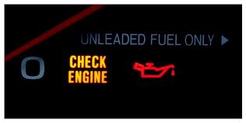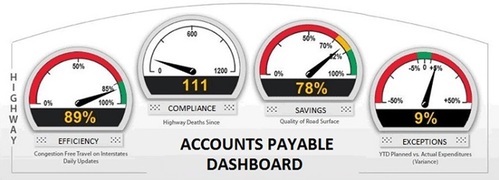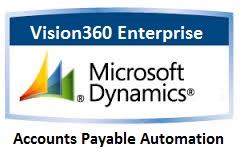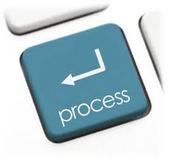 A typical day in accounts payable is anything BUT typical. A day in accounts payable should really be called, Mission Impossible! Why you ask? The accounts payable department and responsibilities of the AP staff go well beyond paying bills. A few of these tasks include opening mail, sorting invoices, matching, getting approvals, coding, entering invoices, check runs, answering calls, filing paper, dealing with closes and audits. With everything that's going on in an accounts payable department its no wonder that keeping track of invoices can be a challenge and chasing down invoice for approval can even be more of a headache. Here are 3 ways email reminders can help make life better and keep your payable process on track. 1. Email alerts let approvers know when NEW invoices arrive that require review and approval. The approver simply opens the email and clicks a link within the email. The link then brings them to the invoice or invoices that requires their attention. 2. Email alerts can also notify and escalate invoices that have gone untouched for a predetermined amount of time to manager for approval. Example, an invoice arrived from a supplier that offers a 5% discount if the invoice is paid with 10 days. Unfortunately, the approver had been out on vacation and didn't see the first email alert. So, an email notification and automatic escalation sent the invoice promptly to a next level manager that was able to approve the invoice and take advantage of the 5% supplier discount. 3. Email alerts eliminate the need for accounts payable staff to waste valuable time chasing down invoices only to hear that the approver never received a copy or that they sent it to accounts payable and AP lost the invoice. With email alerts and escalations gone are the days of the "blame game" where accounts payable is caught in the middle. By utilizing email alerts as part of a comprehensive accounts payable process improvements initiative departments can expect to realize a significant level of improvement, reduction in manual steps and peace of mind. Vision360 Enterprise helps companies of any size to improve their accounts payable process. Whether you have one accounts payable clerk to a full shared service center, entry level or global enterprise, Vision360 will help you reduce and eliminate the manual processes associated with receiving, routing, coding, approving and entering invoices. Vision360 Enterprise will save you time, labor and increase efficiencies across your organization.
0 Comments
 We all know how important it is to keep customers happy. Don’t meet their needs or make them mad and they may leave you. Even worse, their comments may cause others to leave with them. Just like customers, you also need to keep vendors happy. If you don’t you may find your credit line cutoff and that you cannot get essential products and services. Imagine what happens when you cannot get the product you need to sell or use in your manufacturing process. Pretty soon it impacts your company’s ability to satisfy customers. The accounts payable days analysis is a statistic you can calculate that indicates how good of a job you are doing managing accounts payable and keeping your vendors happy. Days payable outstanding (DPO), defined also as days purchase outstanding, indicates how many days on average a company pay off its accounts payable during an accounting period. Days payable outstanding means the activity ratio that measures how well a business is managing its accounts payable. The lower the ratio, the quicker the business pays its liabilities. It also shows the average payment terms granted to a company by its suppliers. The higher the ratio, the better credit terms a company gets from its suppliers. From a company’s prospective, an increase in DPO is an improvement and a decrease is of course, "not good for business and cash flow". Value is a two-way street. Of course, vendors want to provide their clients with the best possible return on their investment. But they're a business, too. If a client makes a project difficult to staff, hard to schedule and costly to execute, more likely than not it will affect the initiative's outcome and value negatively. On the flip side, though, there are clients, even very large ones, that help vendors get through their internal processes, bureaucracy and political hurdles. Clients that smooth the way for vendor teams internally are going to get a superior value from their investment in our services. Effort will be spent on the work the vendor was hired to do, not on jumping through hoops. The vendor staffs up, their people get to work and they are able to focus – which always results in better quality and value at the end of the day. Once negotiations are closed, vendors want to shift their focus from winning the business to meeting the goals and expectations of their client. Yet they sometimes encounter major delays, bureaucratic hurdles and work stoppages based on internal processes and politics. This only hurts the client's project, yet it is often caused by the client organization's own internal structure and approach to management. So. Look at your vendor management processes. Would you want to work with you? Are you making your vendors happy? Do they have a fast-track, once you've signed with them? Or do they have to navigate a complex system of approvals and oversight? Are your schedules in alignment with theirs? Do your internal teams understand what's going on, who's involved and what the goals are? How many levels of management do they encounter? Do they have a point-of-contact with authority? Vendors usually expect to navigate these processes with every client. Even giant companies with hugely complex internal systems and challenging politics can get great value from their vendors by providing them with the tools and management resources they need from the start. As businesses invest millions into their technologies, and vendors do more and more of the work, any organization that engages with technology vendors on key initiatives risks a great deal by failing to be good to work with. DANGER! READING THIS CAN SIGNIFICANTLY IMPROVE YOUR ACCOUNTS PAYABLE PROCESS TO HYPER SPEEDS!2/24/2015 You've got a dashboard in your vehicle that tells you the status of your fuel, engine temperature and oil pressure. Your vehicles dashboard will warn you when problems begin to occur so that you don't further damage your vehicles engine. What if you had the same status and prevention signals in your accounts payable process? What if you could be alerted to the status of your supplier invoices and any potential problems BEFORE it is too late. With Vision360 Enterprise you can do just that. Vision360 Enterprise provides accounts payable departments complete visibility to the entire AP process from a single dashboard view. Vision360 will send alerts, reminders and escalation flags to ensure that your accounts payable process does not break down. If you don't know the status of your supplier invoices at this very moment? You need Vision360. Don't wait for problems to happen. As companies seek opportunities to contain labor costs and streamline operations, Accounts Payable departments face conflicting pressures to enhance their level of service while at the same time reducing staff costs. New technologies have long held the promise of achieving improved operational efficiencies while saving money. To address the costly burden of manual entry, filing, and retrieval, Accounts Payable departments have embraced standardized ERP systems, electronic invoicing, document imaging, workflow, and archiving. But perhaps nothing to date has presented AP departments the transformational opportunity afforded by Vision360 Data Capture, a solution that virtually eliminates data entry.  5 REASONS YOUR AP CHECK ENGINE LIGHT IS ON 1. Invoice Approval Process Relies Heavily on Manual Routing of Invoices 2. A Suppliers Phone Inquiry Is Your Reminder to Pay the Invoice 3. You've Paid the Same Invoice More Than Once 4. You keep missing opportunities to take discounts 5. Your AP process is slower than oil Vision360 will capture all of the required data from your supplier invoices, verify the data for accuracy, match the data against external sources like your vendor master and purchase order files ensuring completeness and the highest level of accuracy possible. Vision360 captures invoice details from hundreds of thousands of suppliers invoice each day. There is no need for templates or to purchase costly OCR software. Convert supplier invoices into data that can be matched, routed and integrated with any ERP system. With Vision360 Enterprise accounts payable departments can expect to eliminate all of the manual touch points and process associated with process, paying and maintaining supplier invoices. With Vision360 Enterprise there is nothing to purchase, no software licensing restrictions, no annual software maintenance and very little IT resources needed. Vision360 Enterprise automates the routine steps involved in approving invoices. Once supplier invoices are captured, the invoices can be routed to approvers based on business rules, through multiple levels of approvals, coded and released for payment.  In a recent study by the Institute of Financial Operations (IFO) on Accounts Payable Automation, over 95% of the respondents said they still receive paper invoices in the mail. It is 2015, it is time for your company to improve the way you company processes incoming invoices. By now you have probably heard that Accounts Payable (AP) processing isn’t as efficient as it should be. You probably have heard the risks of misplacing invoices, not paying them on time, the time it takes employees to file and retrieve these invoices or documents, and much more. You are more than aware that AP automation will give you the efficiency, cost controls, visibility, and accuracy of information that your industry demands to be successful. Our ERP System Can Do That - While your ERP or accounting system might have an accounts payable module, they notoriously lack the functionality, control, insight, and automation required to support the accounts payable process. ERP simply were not built for processing accounts payable invoices; some of the major issues with managing A/P in your ERP module include their inability to handle invoice approvals, lack routing rules, and the ability to distribute coding, there is no disputes and dispute resolution, the need for additional dependent modules, the lack of sophisticated reporting, the need for outside applications to fill functional gaps, their inability to automatically update invoice information, and extreme process and workflow inefficiencies. Not to mention that if your ERP partner does offer an AP automation module it probably will come at a high price. We Don’t Need Automation – Do you want to save time and money and realize fast ROIs? AP automation allows organizations to get on top of their invoice management agenda, providing solutions with unrivaled ease-of-use, flexibility and powerful matching capabilities. Automated AP solutions provide increased productivity, reduced processing costs, improved process transparency and minimized errors and fraud. Other benefits include multi-channel interaction, rapid ROIs, touchless processing and easy scaling. Solutions cover the full invoice management process from capture through validation, process management, archiving and reporting. Rather than spending time on redundant tasks like data entry, filing, sorting, copying, etc. employees can concentrate their efforts on work more directly related to your bottom line. Automation Doesn’t Really Save Money – The cost to manually process an invoice can range from anywhere between $5 – $25, and with strategic automation, this cost can be reduced to an average of $2.50! High costs include those associated with the errors of manual data entry, invoices getting lost while they are routed from one individual/department to another, exceptions processing, accrural delays, failed audits and duplicate invoices. Automation provides a 90 – 95% reduction in paperwork which leads to a 25% increase in labor productivity. We’ll Lose Control - Automation actually provides greater visibility, allowing authorized users to see invoice status at any time. Invoices are no longer left unattended, and employees are held accountable for their role in the approval process. This in turn leads to greater control since processes are automatically updated as invoices make their way through workflows, providing more time for focus on exception handling. We Can’t Afford Automation – Actually, you can’t afford not to have AP automation. With the right solution in place, you’ll save time and money currently spent on manual processes while avoiding things like double payments and forgotten invoices. And, with cloud-based solutions, there is no upfront software purchase required and no dedicated IT team to be put into place. Using this type of solution enables organizations to realize faster ROIs by basing return on documents processed rather than viewing it as a project. We’re Too Small For Automation – No matter what the size of an organization, there are employees assigned the task of manually entering invoice data when they could be focusing on more strategic responsibilities. Just like with larger businesses, there is money to be saved through the implementation of an accounts payable workflow, including lost invoices and failed audits. And with the use of cloud-based solutions, costs are minimized with solutions available to fit any budget. We’re Too Big For Automation – AP automation solutions were actually first designed with larger organizations in mind, so they are able to handle large volumes of invoices. With the abiity to create effective workflows and integrate with existing ERP systems, automation is a no brainer for the larger business that has many more departments and employees for a single invoice to pass through. There is a greater chance for error with a manual system used in a big business since there is a higher number of invoices and more people handling them. Automation takes manual procedures out of the mix allowing for increased control and visibility. We Don’t Have Time to Implement Automation – There are many AP automation solutions to choose from, many of which require no dedicated IT teams or special training. You can decide whether to outsource, insource or use a combination of both. Any time spent on implementation will be quickly regained through rapid ROIs. About Vision360 Enterprise: With Vision360 Enterprise there is nothing to purchase, no software licensing restrictions, no annual software maintenance and very little IT resources needed. Vision360 Enterprise automates the routine steps involved in approving invoices. Once supplier invoices are captured, the invoices can be routed to approvers based on business rules, through multiple levels of approvals, coded and released for payment.
The benefits of integrating Vision360 Enterprise accounts payable processing with MS Dynamics:
- Seamless integration reduces the need for technical resources - Allows for rapid deployment - Accounts payable dashboard provides 100% visibility to supplier invoices - Eliminates 100% of paper invoices - Captures email invoices electronically - Eliminates the need for data entry - Powerful coding tools - Perform 2 & 3-way matching - Data validation engines ensures accuracy - Centralized processing and controls - Complete audit trail of approval activity - Generate instant efficiency reports - Instantly access invoices from electronic archive - Enforces your security, processing rules and compliance We do not take a one size fits all approach to any engagement. Our strength is in our ability to objectively evaluate the business problems and challenges that affect every day. By leveraging our business process solutions experience, coupled with our technical expertise we are able to effectively analyze and recommend a variety of viable solutions to fit the needs of any business problem and challenge we are faced with. For more information contact us or call 603-437-1400 x308  It's never been easier for employees to complete and submit expense reports. Vision360 Enterprise Expense allows staff to create electronic expense reports, attached receipts and submit to managers for review and approval. Vision360 Expense will streamline the expense reporting process and improve the review and approval flow between departments. Vision360 Expense turns lengthy, tedious paper-based approval processes into one-click approvals. Managers can easily review and approve expense reports from anywhere, at anytime – no paperwork involved. All expense reports and receipts are in one location making review and approvals faster and easier than ever. Enforcing reimbursement and expense policies and streamlining the expense process has never been easier. How Does It Work? Employees simply fill out the reimbursement form, attach their receipts and click submit! The expense report is sent directly to their manager for approval! That's all there is to it. 1. Eliminates paper from the review and approval process 2. Attaching digital receipts this keeps things organized 3. Having visibility to expense reports during the approval process cuts down on the number of status inquiries from employees 4. By using electronic expense reports employees can manage expenses from anywhere 3. Electronic expense reports can be quickly approved ensuring that employees get reimbursed promptly for their expenses SUBMIT APPROVE PAY Vision360 Expense will allow you to monitor all aspects of your business travel and reduce excessive spending. Gain visibility into your company's spending with comprehensive data, reporting and custom reports. Regardless of when a transaction occurred, what form of payment was used, or which supplier or vendor was selected, you'll get detailed analytics into your overall travel spending. Then, you can set rules to increase control, eliminate loopholes, improve spending behavior, and lower your overall expenses.
A free weekly webinar series is underway at BlueCreek Software the developers of the Vision360 Enterprise accounts payable automation system. When it comes to accounts payable processing the landscape is so full of systems, software and technologies that often times people just shy away.
Our weekly webinar series is intended to help take some of the mystery and guess work out and help to get people pointed in the right direction. "We cover a lot of information in a very short amount of time". says Richard Pigott Sales Director with Vision360. "These days people don't have a lot of time to seek out and research all of the possibilities so we try to incorporate as much as we can in our webinar to make their job a little easier". Some of topics covered in the weekly webinar include: - Challenges faced by accounts payable departments - Costs associated with processing supplier invoices manually - How paperless invoice processing works (an overview) - Invoice routing, approvals, 3 way matching, coding, exceptions & integration with ERP's - Building a business case for accounts payable process improvements This webinar is perfect for accounts payable managers, Controllers, CFO's, IT Directors or anyone interested in learning how to eliminate manual processing, reducing overall costs and streamlining the AP process. Attendees will receive free information and white papers to help them decide if accounts payable automation is right for them. There’s something to be said for hard work, but if all those tireless hours take away from what makes you then it’s time to strive for some balance. Here are a few ways to improve your life. Create “break” appointments. If you struggle to tear away from work on your own, then why not pencil it in? Create a phone alert, add it to your Outlook calendar and consider that “me” time a must-do. Put exercise on your to-do list. One of the best ways to clear your mind and de-stress is to get your body moving, so do what you can to stick to your fitness routine. Whether it’s an early-morning gym session or a late-night walk around the block, those precious moments are sure to help you stay sane. Limit at-home work hours. Technology makes it easy to work 24 hours a day, but that doesn’t mean you should. If you need to work at home, then set a time limit beforehand so that you don’t overdo it. Leave your phone at home. Truth is, you don’t need to be connected all the time; that isn’t healthy. When you’re heading to the gym or the grocery store, leave your phone behind and check out for a while. Turn off your computer extra early. If you find yourself tossing and turning because you can’t stop thinking about work, then try tuning out a bit earlier by shutting down your laptop several hours before turning in. Don’t charge your phone by the bed. Can’t help checking your smartphone every time it lights up or beeps? Do yourself a favor and leave it in another room—out of sight, out of mind. Schedule social time with friends. When you’re extra busy and exhausted, going out can be the last thing you’d like to do—but it’s also crucial that you maintain a life outside the office. Make plans far in advance so that bailing simply isn’t an option. Put hobbies into your planner. Whether you love to read, paint, or play music, it’s important that you keep up with the pastimes that make you feel most like yourself. Hold yourself accountable by signing up for a class with a friend or hosting a weekly book club meeting. The winter months are often cold and dreary, zapping your employees’ motivation. Rather than letting the winter blues get the better of your workforce, take a few proactive steps to ensure employees are happy and productive this winter season and beyond. 10 tips for increasing employee productivity during the winter months:
1: Complete and Clear Visibility Visibility is a critical issue in most AP departments, many of which are still paper based. Aberdeen Group’s Procure-to-Pay Study found that 80% of invoices are still paper, leading to a multitude of visibility issues. Lack of clear visibility starts with the invoice receipt process. Invoices tend to be sent to numerous field offices rather to an Accounts Payable designate. These pre-approved invoices are then manually forwarded to Accounts Payable and entered into the Enterprise Resource Planning (ERP) system, providing zero visibility on the front end. Delays can arise from invoices sitting on managers’ desks for days which can also lead to unnecessary rush invoices when line-of-business managers demand quick payment to maintain supplier satisfaction. When Accounts Payable departments are chronically backed up at the end of periods, there is a risk of not recognising liabilities. Incomplete accruals can understate expenses and overstate income. This can lead a company susceptible to financial statement cut off fraud occurring as companies get desperate to show earnings or reduce losses. Lost paper invoices can also obscure a company’s visibility into liabilities. These consequences of a paper based system argue against continued reliance on this outdated model. 2: Accelerate Period End Close with Greater Accuracy Companies are being forced to close their books more quickly and more accurately. While there are benefits such as delivering meaningful information to management in a timely fashion enables faster and more tactical decisions, closing the Accounts Payable books can become very difficult. A faster, more accurate Accounts Payable close can be achieved by
The right Accounts Payable automation in place can lead to more accurate closings. Invoices and all backup information are automatically entered into the ERP and workflow leverage the ERP’s account codes and approval framework to create a permanent record of every transaction. Every step of the close simplifies, allowing for organisations to perform this activity more quickly and accurately. 3: Turbo Charge Productivity Accounts Payable department is hindered with paper, resulting in loss of productivity due to filing, retrieving, and faxing, copying, mailing or looking for papers that have been misplaced, misfiled or lost. Further comprising productivity is that Accounts Payable processes are too complex. The number of manual internal controls and little standardization as well as Accounts Payable department interruptions leads to increasing loss of productivity. 4: Leverage Your ERP Investment ERP platforms, despite having powerful capabilities, have struggled to meet expectations or deliver on their value proposition. According to a PricewaterhouseCoopers survey, only 36% of finance executives are confident their technology spending is yielding an optimum return. The lack of value in ERP implementations is due to the use of old, manually intensive processes that hamper the system’s potential. The ERP is an excellent repository for all financial data, it is not designed to support the processes around each of those transactions. The original invoice being stored in the ERP provides access to that document, but has no impact on how it got approved, whether it received the required signatures or whether proper policies were followed. The key to unlocking the value in an organisation’s ERP investment is to develop simplified and standardized process for repetitive tasks such as invoice receipt, review and approval. Companies have invested in sophisticated ERP implementations, but old pre-ERP processes are simply transferred to work with the new system, leading to inefficiencies and expensive communications and collaboration. Through simplifying and standardizing processes, removing unnecessary steps and improving overall efficiency. All captured information needs to be tightly integrated with a consistent set of processes to be able to maximize efficiency, speed, visibility, cost reduction and controls. A streamlined process also requires all participants, regardless of position or experience, to have access to all appropriate information while interacting intuitively and intelligent with the transaction. 5: Improve Quality Errors can be costly through departmental productivity and corporate reputation. Companies need to understand where and why errors occur and to systematically address and eliminate them to improve quality and reduce costs. Each step of the AP process is time consuming, and the cost of one error can be significant. Paper based processes are known to have higher error rates – keying errors, matching errors, lost and/or misfiled documents etc. Errors can also impact quality of service since they irritate vendors and frustrate internal clients. A quality program is the cornerstone of any effort to develop a “continuous improvement culture”. Having a baseline understanding of the time and resources required to perform a function and tracking progress as quality initiatives are implemented. Quality programs pay direct dividends. 6: Facilitate Spend Analysis, Planning and Forecasting Organizations must accurately budget, plan and forecast to maximize business performance. If corporations can’t accurately analyse previous or current spending trends, their ability to plan and forecast is severely affected. A major impediment to accurate budgeting, planning and forecasting is the inability to analyse costs at the appropriate level of detail. The lack of transparency makes it impossible to perform the proper level of analysis that informs future planning activities and realizes cost savings. Proper invoice coding is also essential. Coding frequently introduces complexities into budgeting, planning and forecasting cycles because it is error prone. Resolving and re-keying coding errors can be time consuming and inefficient, but if not done properly, the errors are prolonged and create enormous gaps in an organisation’s ability to analyse previous spending. 7: Embrace Best Practices Accounts Payable departments are not able to implement best practices without clarity in corporate policies and procedures. Lack of a standard codified approach to the disbursement process creates a multitude of problems for AP:
The most effective path to AP best practices is the automated enforcement of policies and procedures via workflows that incorporate best practice policies. Automated workflows that enforce AP business rules can ensure that all transactions
8: Strengthen Internal Controls All finance professionals are aware of the fraud risks their organisations face. The PricewaterhouseCoopers Global Economic Crime Survey found that 45% of companies worldwide are victims of fraud. In addition to revenue loss, significant collateral damage includes loss of reputation, decreased staff motivation and declining business relations. There are three main categories of fraud faced by AP departments include Corruption, Asset Misappropriation and Fraudulent Statements. The way to gain control is with best practices that create the foundation for a strong controls environment. Through simplifying processes and centralization, automated and preventative controls and technology leverage. 9: Optimize the Company’s Biggest Asset: Cash Accounts Payable is about getting the bills paid, but the process can be costly, paper intensive and time consuming. A PricewaterhouseCoopers study states that an average AP organisation makes 19 copies for each document, loses 1 out of every 20 documents and spends 25 hours recreating each lost document. Other paper based costs include storage, document transportation, supplier dispute resolution, internal and external audits, duplicate payments, late payments, penalties and errors. Best practice workflows ensure simple, standardized processes where documents are brought online at the outset are fully integrated with the ERP and are then routed to all participants in a given business process including non-ERP users.
1. Invoice Processing Costs:
What's your cost to process a single supplier invoice? There are many factors that affect the cost to process a single supplier invoice. Many of these costs are attributed to the "clerical duties" performed by skilled accounting staff. These clerical duties include opening incoming mail, sorting and staging invoices into batches, sending paper invoices to approvers for proper coding and approval, performing manual data entry of key invoice data into the accounting system for payment processing. Many studies have been performed by trade associations i.e. Paystream Advisors, Aberdeen Group, The Accounts Payable Network, IOFM and many more. The statistics have shown that the average cost to process a single invoice is roughly $15 dollars and companies with significant accounts payable processing challenges have seen their costs in the range of $38.00 per invoice. Organizations that have implemented some level of accounts payable process improvement have realized a significant savings of 60-80% over manual invoice processing with per invoice costs reduced to $3 dollars or less per invoice. 2. Invoice Processing Speeds: How long does it take for your supplier invoices to process through your organization for payment? The time it takes can greatly vary depending on the number of manual steps an invoice needs to go through for proper approvals, matching, coding and entry into your accounting system. According to the "Aberdeen Group" the average processing time to process invoices manually is between 24 - 30 days, while companies that have implemented some level of accounts payable process improvement have seen their processing times reduced down to 5 days or less. 3. Productivity Per Team Member: Are your accounts payable team members equally productive? Take the number of accounts payable invoices per month and divide by the number of invoices processed. You should also factor in the tasks performed by each team member. It is estimated that 75% of the labor and time associated with processing supplier invoices is performed by the accounts payable department. Measure the time it takes to process an invoice today and you can be assured that accounts payable automation will double the throughput and significantly reduce the costs to process an invoice. 4. Variance Analysis/Correction Rates: Variances can be caused by many factors, however the time it takes to correct them can cost your company more than 10 times the costs to process a single invoice correctly! Are line items coded correctly? Are manual keying errors causing bottlenecks? Are you able to report on variances in a timely manner? With accounts payable automation rules can be put in place to correctly process invoices and flag those invoices with issues and route them for resolution and instantly report on any variance or processing issues. 5. PO Matching Process and Speeds: The process to manually match an invoice and the time it takes can vary dramatically between organizations, processes and definitely between people. Let's face it - some people are just faster than others and some accuracy vary. With accounts payable automation business processing rules can be applied to "automatically match" invoices against your purchase order, receiver, vendor master or any other criteria. When applying these "auto-matching rules" invoices can be "automatically coded" to eliminate the need for manual data entry, hence eliminating the "fat finger" problem. 6. Invoice Entry: Invoice entry largely relies on skilled accounts payable staff to take the time to enter by hand the information from a supplier invoice into the company's accounting system. As you might expect manual data entry is "error-prone" and relies on people. With accounts payable automation the data captured during the routing, matching, coding and approval of invoices is transferred into the accounting system, "error-free". With Vision360 Enterprise accounts payable departments can expect to eliminate all of the manual touch points and process associated with process, paying and maintaining supplier invoices. With Vision360 Enterprise there is nothing to purchase, no software licensing restrictions, no annual software maintenance and very little IT resources needed. Vision360 Enterprise automates the routine steps involved in approving invoices. Once supplier invoices are captured, the invoices can be routed to approvers based on business rules, through multiple levels of approvals, coded and released for payment.
Many organizations are challenged by wanting to break free from slow and costly paper based systems. Accounts Payable departments are constantly being challenged to cut operating costs whilst ensuring invoices are paid promptly. Manual AP processes are costing companies on average $15.00 per invoice; that’s a staggering on-going cost for a company who may be thinking they are managing the invoice paper flow!
A typical manual AP process includes: Invoices coming into the company from different suppliers or cost centers in different layouts and delivery formats – USPS mail, email, pdf, fax and more. Supplier invoices are forwarded to the relevant person responsible for that invoice. There is a longer lead time due to manual routing, processing and sign off procedures. Inefficiencies due to time spent matching the invoice to the purchase order, verifying, approving and signing off for payment. Inability to maximize discount benefits associated with early payments. If it exceeds the company’s limited amount it may well have to go to senior management for a 2nd or 3rd level approval. If approved the invoice is then manually input into the accounting system and made ready for payment. Paid invoices are then filed away in file cabinets and boxes for archiving. Archive costs for compliance and accounts audits. Typically, there may well be invoice queries for a variety of reasons, is the vendor valid, is the invoice correct and does it match the PO or is it a duplicate invoice, accountants need invoice copies, auditors request copies and many more. www.bluecreeksoftware.com Why automate the accounts payable process? 1. To give complete processing control to the accounts payable department. 2. By automating the accounts payable process you gain complete visibility of the accounts payable function using an end-to-end invoice management system of all processes and, any financial implications. 3. Capturing the invoice information at the point of receipt eliminates the need for manual data entry. 4. Automatically consolidate and reconcile purchase orders, invoices, payments which helps manage allocations, cash flow and payments. 5. Invoice processing automatically matches and verifies scanned invoices with purchase orders. 6. The process is centralized so up to date live information is made available to the accounts payable team at every stage of the AP process. How does adopting an AP strategy reduce my paper flow? It’s the start toward adopting an e-invoicing strategy for your organization by automating the processing of invoices and choosing to integrate a straight-forward workflow and document management software with your existing systems to remove manual and repetitive workloads. Using a centralized accounts payable process that’s integrated into your current system provides: -Automatic allocation of the right invoice to the relevant transaction -Automatically post invoices for payment -Automatically queue exceptions for handling -Deliver information on exceptions to the AP desktop -Make payment status available to everyone instantly What are the major benefits? 1. Reduce invoice processing costs 2. Eliminate manual data entry 3. Significant time savings 4. Exceptions resolved quickly 5. Supplier conflict resolution 6. Early payment discounts 7. Reduced supplier inquiries 8. End duplicate payments 9. Realize a significant savings in 6 – 9 months Vision360 Enterprise helps companies of any size to improve their accounts payable process. Whether you have one accounts payable clerk to a full shared service center, entry level or global enterprise, Vision360 will help you reduce and eliminate the manual processes associated with receiving, routing, coding, approving and entering invoices. -
Do You Feel Like Your AP Department Is Operating in the Dark?
Studies show that best-in-class companies outperform other businesses by automating their invoicing processes, and other key business processes, with document imaging and workflow stems. According to Aberdeen Research’s “businesses that automate their account payable operations reap significant advantages—including processing their invoices significantly faster and at much lower cost. For companies that fail to automate, the study found, “Paper invoices and manual processing continue to hamper accounts payable operations, keeping suppliers in the dark and failing to give accounts payable the visibility it needs to actively manage organizations’ cash positions.” Best-in-class companies, on the other hand, overcome this impediment by pursuing “comprehensive accounts payable automation to drive continued performance improvement.” The end goal is to maximize the impact of automation on all accounts payable processes, from receipt to scanning to approval workflow through payment. How well does automation improve invoicing operations? According to Aberdeen’s research, best-in-class companies outperform their peers by a considerable margin, taking 3.8 days and a cost of $3.09 to process an invoice vs. the industry average (middle 50%) of 9.7 days and $15.61 per invoice. For the bottom 30%, it takes 20.08 days at a cost of $38.77 per invoice. Respondents who implemented document imaging and workflow automation reported 21% lower invoice processing costs than others, while also securing early payment discounts on more than twice the number of transactions. Further improvements, the study found, can be gained from integration with back-end financial and ERP systems and the use of performance-monitoring dashboards. A Surge in Workflow Deployment Aberdeen Research’s findings jive with those of PayStream Advisors’ latest survey, which showed that electronic invoicing and automated workflow are both experiencing increased adoption, as more companies strive to migrate from a manual paper-based invoice system to an efficient automated system.” As PayStream Advisors notes, “Skeptics may still doubt the ROI ofautomated approval workflow, but it is getting harder to defend that position in the face of the facts.” PayStream Advisors’ study, which surveyed 500 accounts payable professionals, showed that the top three financial automation technologies that have been most useful include eInvoicing, workflow, and front-end imaging/OCR. Electronic invoicing and automated workflow are the top automation goals for accounts payable in 2013, the study showed. The number-one benefit cited for approval workflow was the quicker approval of invoices (76 percent), while one-half were able to increase employee productivity, and nearly 60% reported lower processing costs. As PayStream Advisors notes, invoice processing can be expensive and time consuming when performed using manual processes and paper documents, while electronic invoicing and automated workflow can lower costs and speed up processing. Overall, more than one-half of companies that adopted eInvoicing solutions cited a reduction in labor or processing costs and faster approval cycles as key system benefits, as well as greater visibility into spending, improved cash management, and an increased ability to capitalize on early-payment discounts. As workflow technology becomes easier to deploy and more affordable, including software-as-a-service offerings, more businesses are able to obtain the benefits. As PayStream Advisors reported, “The market for electronic invoicing and automated workflow continues to open up as adoption trickles down from large organizations to small and medium enterprises.” - See more at:
Labor-intensive manual accounting systems and paper-based invoices have been plaguing accounts payable departments for decades. Departments relying on manual systems are finding that adding staff does not solve the inherent problems of unrecorded liabilities; duplicate, inaccurate, or unauthorized payments; and misappropriated cost allocations. These departments are struggling to meet their organizations’ basic need for visible, timely, and accurate financial reporting and control. And compounding the problem, their manual systems make it difficult, if not impossible, to address the critical issues at the heart of compliance.
In a study by the Aberdeen Group, organizations reported between 40% and 60% savings by implementing the right invoice automation solution. Although results can vary based upon the package, in many cases the investment pays for itself in a matter of months. 1. Reduce costs. In these tough times, cost reduction is still on the front burner for corporate financial execs—and they are looking to their operational departments to deliver more savings. Also, they know that basic transactional processes can be done cheaply overseas. This is not a welcome thought to AP. Fortunately, this can most often be avoided by using automation. Many AP departments have slashed costs up to 75 percent and more using automation. Of course, there are many different approaches to take and many tasks and subtasks that are candidates for automation, including the entire invoice process. Overall, an end-to-end automation process can bring your per-invoice processing costs down to a few dollars. The primary way to cut costs in AP using automation is to use it to get rid of the paper invoice (or paper expense report). You can use imaging, where you scan your paper invoices and route the images for approval and payment. Along with this, you can eliminate manual data entry and input of the invoice data. On the other hand, you can avoid paper altogether by going to electronic invoicing— that is, receiving the invoice from the vendor in an electronic format that goes right into your accounting system. 2. Increase efficiency. Hand in hand with cost reduction comes increased efficiency. This is triggered because automation can create a touchless process for invoice processing. With certain electronic invoicing setups, AP doesn’t even see the invoices coming in—they are automatically received, matched to purchase orders (POs), and then paid. For non-PO invoices, the electronic bills are automatically routed to approvers. All AP sees are exceptions and any invoices that do not come through the e-invoicing process. Many AP benchmarking studies have found that efficiency levels increase as automation increases. For example, at AP departments with a low level of automation, a staffer can process about 2,000 invoices a month—but that figure doubles to about 4,000 with a high level of automation. 3. Eliminate errors. Errors in the invoicing process waste a lot of time—you have to do a lot of unproductive re-work. Every automated invoice solution on the market addresses data verification and quality assurance, either before the invoice is received or while it is in the AP department being prepared for approval. In some cases, the invoices are "pre-screened," meaning that the solution applies various tests to ensure that they are complete and accurate. For instance, they may check for a valid vendor number or PO number. And they can do a match check by cross-checking the addition of line items with the invoice total. You can also define parameters, such as minimum dollar amounts or maximum variances, for your key vendor. 4. Prevent fraud. In many ways, AP automation can help prevent fraud perpetrated either by con artists sending phony invoices or dishonest employees. As already mentioned, automated invoice solutions can check for valid vendor numbers and POs. For invoices without a PO, the systems can compare an invoice to contract pricing, terms, and so on. This provides a quantitative, automated method of ensuring an invoice is right. Using an automated system for employee travel and entertainment (T&E) reimbursements also helps prevent fraud. Detailed business rules can be embedded in T&E systems that red-flag questionable expenses. Also, some T&E systems now offer complex analytical tools that, for example, can match actual travel spending on what was booked. On the payment side, moving from paper checks to electronic payments using ACH or other method cuts down on fraud because paper checks are vulnerable to tampering. But ACH is not totally immune to fraud, so features such as debit blocks and filters should be used. 5. Capture more discounts. Because invoice automation speeds up the payment cycle time, AP managers say they have a better chance of capturing more early-payment discounts. Also, invoice technology has given rise to automated discount management capabilities that many believe will become a significant factor in the evolution and growth of invoice automation. According to IOMA’s Paperless Accounts Payable: The AP Department’s Complete Guide to Invoice Automation, customers of one solution provider are reporting that their return on investment from discounting is five to 10 times as large as their return on investment from processing cost reductions. 6. Enhance cash flow. The vast majority (80 percent) of AP pros recently polled on AccountsPayable360.com said that AP has a "high" or "somewhat high" impact on their companies’ cash flow. There are traditional, nontechnology ways to do this, such as stretching paydates and decreasing staff overtime, but automation has triggered the ability to affect cash flow to a greater degree. Already mentioned is the ability to use automation for invoice discount management, but others include controlling the timing of payments by using electronic methods, such as ACH, or by using corporate credit cards to pay invoices. Also, automation improves cycle time, which reduces the chance of paying late-payment penalties. 7. Increase visibility. Automated invoice solutions give you a transparent view of every step of the invoice-handling process. Monitoring the invoices throughout the process allows for audit trails and strict financial controls to help ensure compliance with internal corporate policies and external legal requirements, such as the Sarbanes-Oxley Act. Electronic storage also helps ensure regulatory compliance and makes document retrieval much easier, especially when customers can do their own lookups of past invoices. This also helps during audit time, when invoices need to be pulled. This visibility also saves time during the month-end close because accurate accruals can be made quickly because all of the invoices are being tracked and can be captured and reported. 8. Free up staff time. Many AP departments that have automated find that they save so much time that they can eliminate head count. But instead of doing this, they have made great efforts to redeploy the staff. For example, invoice automation can reduce the need for invoice processors, so move them onto a help desk in shared services or train them to do analysis of spending, which has many benefits, such as leveraging the ability to negotiate better contracts with vendors, identifying repetitive purchases for better sourcing opportunities, and uncovering "by-passing" (purchases made outside existing contracts). 9. Improve AP’s image. As the work in AP becomes more automated, the department has a golden opportunity to shine. When technology projects are implemented, track the results and then make sure the top brass knows about the improvements, be they quantitative (e.g., costs and efficiency) or qualitative (e.g., better customer service and improved vendor relations). Document each change and the savings, be they in time or money, and pass them along. 10. Advance your career. Use the positive results of AP automation to get the credit you deserve by making upper management aware of the results. True, most people are uncomfortable bragging about themselves, but it’s necessary to do this to some extent. Not only will it give you the credit, but it will also make implementing future changes easier if you have a positive track record. |
AuthorVision360 Enterprise Accounts Payable Automation Solution by BlueCreek Software reduces time wasted chasing down paper invoices by automating invoice approvals, eliminating manual data entry, eliminating paper invoices and reducing processing costs. Categories
All
Archives
September 2023
|












 RSS Feed
RSS Feed